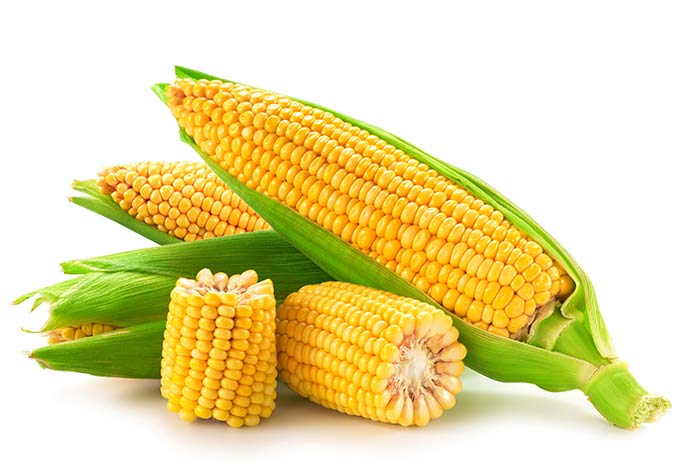
The most popular summer vegetables has a lot going for it - and a lot has changed over the years. This guide will help make the most of corn this season.
Jump to:
When is corn in season?
Corn is in season in the hot summer months, which varies by region. The seeds need much warmer soil temperatures to germinate compared to other summer vegetables.
- Hot southern states (like Kentucky or Arizona): mid-May until September
- Midwest (like Illinois or Ohio): June or July until October
- Cold northern regions (like Minnesota or New York): mid-July or mid-August until September or October.
Why modern corn is sweeter
Have you heard the old adage, "have a pot of water boiling before you pick your corn."
This came about because the type of corn grown 50 years ago converted its sugar to starch very quickly after harvest, losing about half of the sugar in 24 hours. So the sooner you ate it, the sweeter and more tender it was. But it no longer applies.
Since then, researchers at the University of Illinois developed several new types of corn that are even sweeter and retain the sugars extremely well after harvest. I had the opportunity to talk to a research assistant on the project and discuss the different characteristics of modern types of corn, which have replaced the corn of last century.
While freshly harvested corn does taste better, it's quite marginal. You should not worry about storing corn in your fridge, as that old adage is now outdated. Modern corn maintains most of the sugar for a week after harvest.
Types of corn
Corn at the grocery store and farmers markets are rarely labeled, unfortunately. However, there are some trends that usually hold true: Sugary Enhanced corn is often found at farmers markets, whereas Super Sweet corn is the common grocery store variety.
| Type of corn | Starch | Sugar | Flavor | Source |
|---|---|---|---|---|
| Standard | high | low | full | grown your own |
| Sugary Enhanced | medium | medium | med-full | farmer's markets |
| Supersweet | low | high | medium | grocery stores |
- Standard corn (su): Also called "sugary types." The old-time corn that quickly lost its sweetness after harvest. This was the only type sold in the 50s and 60s, and still most commonly sold type until the 1990s. It is no longer grown commercially due to it's poor shelf life. However, when fresh it has that full corn flavor.
- Sugary Enhanced (se): Sometimes labeled as "se," referring to the gene that enhances the sugar. This type of corn is sweeter than standard (su) corn and maintains sugar levels well after harvest. They also retain most of the old-time corn flavor. This is the most common variety sold at farmers markets as customers like the flavor, sugars, texture, and shelf life.
- Supersweet corn (sh2): Sometimes labeled as "sh2", which refers to the gene responsible for the shrunken kernels when dried. They have less starch and 2-3 times more sugar than "standard / su" corn. They are also sweeter than the "sugary enhanced / se" corn. However, the kernel 'skin' (pericaps) are tougher, less creamy, and not as full-flavored. Since they ship and store well, they are the most common type of corn sold at grocery stores.
Interested in growing your own corn, check out my corn garden guide with tips, techniques, and varieties.
Selection & storage
Corn should look and feel fresh, which includes:
- Husks should be green, fresh, and not dried out
- Cobs in husks maintain their moisture much longer than shucked cobs
- Silks (the tassels at the top) should be fresh-ish looking. In the field, the silks turn brown as the corn is ripe for picking, so brown silk tassels are expected. Avoid ones that have totally dried out silks, as the corn is also likely drying out.
Look for husks that are fresh and not dried out. Also if there is a nice big silk tassel at the top, it makes pulling the silk off the corn much easier. - Corn should feel full and plump below the husk, and heavy (a light weight indicates the kernels are drying out)
How to tell is corn is bad:
- Black, mushy silks mean the corn is past its prime (but likely still safe to eat)
- Slimy kernels should not be eaten
- Mold at the tip end means the corn is bad and you should not buy or eat it
- Mold on the corn itself should be discarded
- When purchasing, you might find black spots on the husk - the cobs are normally in perfect condition underneath, but check for signs of mold to be safe. Don't use those husks for tamales and other edible purposes, however.
Should you peel back the husk?
When people peel the husk back a couple inches before purchase, they are looking to see if the kernels are filled in and full. However, this practice isn't as helpful as you might think for a couple of reasons.
First, missing kernels at the tip are not an indication of the quality in the rest of the cob. That's because it's not uncommon for the tip to have missing kernels due to pollination issues. Those kernels at the top of the cob are last to be pollinated and any number of problems can cause that. Those problems don't affect the quality of the rest of the cob.
Second, dried-out kernels at the tip are often a result of moisture loss from the husk being loose. The husk keeps moisture in, but is slightly looser at the top by the silks (and other people might have already pulled it back a bit). This makes the tip lose moisture when the rest of the cob is perfectly fine (and the main reason resist peeling the husk back yourself if possible).
The best check for freshness is to feel for the kernels under the husk in the middle of the cob - do they feel full and firm? If they do, it will be a great cob.
If you get home at the top of the cobs are undesirable, you can cut them off before you cook & serve them.
Storage
Corn is best stored in the fridge to maintain freshness and sugar levels. A lot of sources suggest storing corn on the counter, however Kitchen Myths says that's a myth and multiple recent sources also back this up.
Storing corn in the fridge slows down the process that turns the sugar to starch, so the best advice, if you don't eat corn right away, is to store it in the fridge. Modern corn varieties maintain their peak quality for 4-7 days after harvest.
Using cobs in soup
The cobs contain a lot of flavor that can be put to good use in a kitchen. You'll get a typical corn flavor when using them fresh, or a slightly nuttier flavor if roasted in the oven before adding to a soup.
A corn soup can make use of both the corn kernels and the cob (like this zucchini corn chowder). You can also do some meal planning and make a recipe that calls for the fresh kernels like a corn patty or this farmer's market summer pasta. Then throw the cobs in a vegetable stock or a soup.
Seasonal recipes
Each recipe below only uses ingredients that are in season at the same time as corn, or ingredients that have a year-round season. Since their season overlaps with the beginning or end of other fruits and vegetables, the recipes are grouped into early season, late season, or anytime they are available.
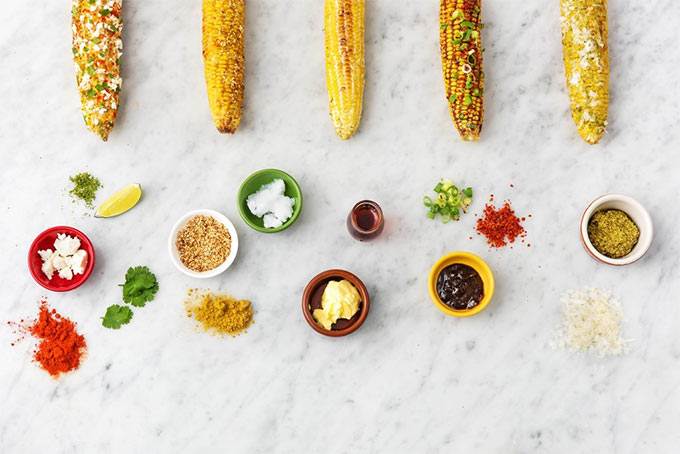
5 ways to dress up corn on the cob by Hello Fresh
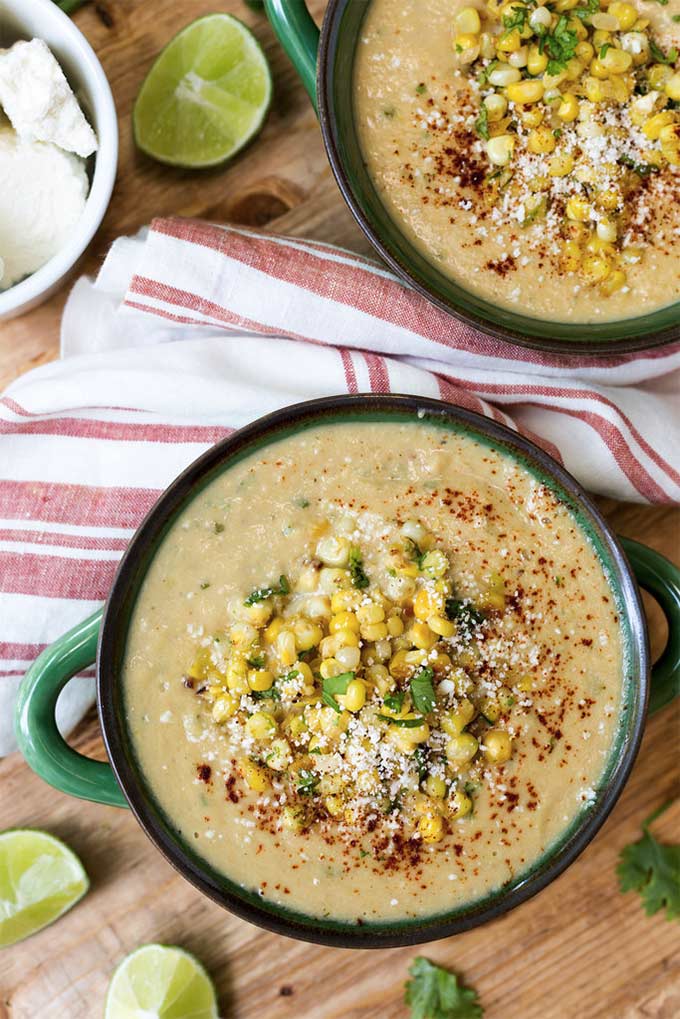
Mexican street corn soup - recipe by Striped Spatula
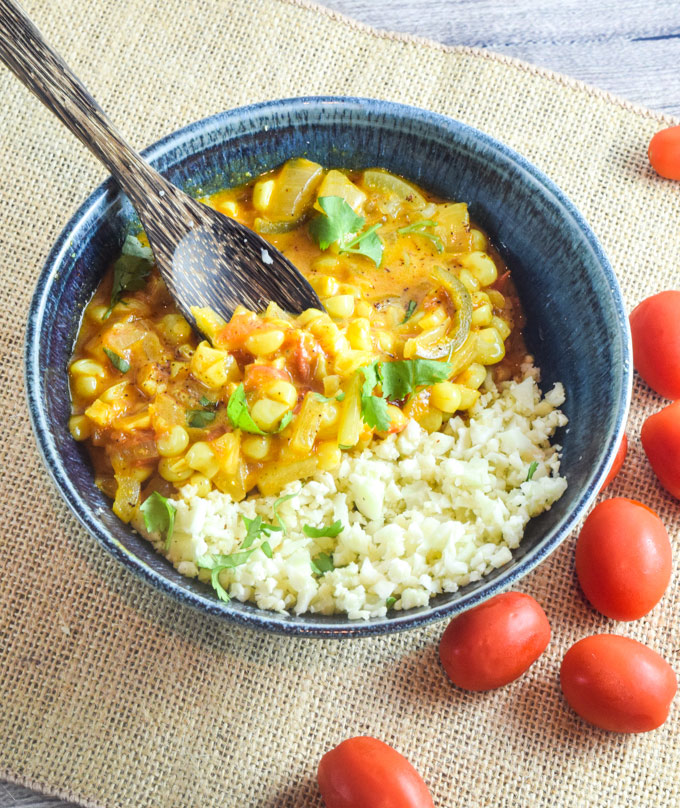
Sweet corn curry - recipe by Yup, it's Vegan!

Corn and basil cakes - recipe by Noble Pig
...For late summer
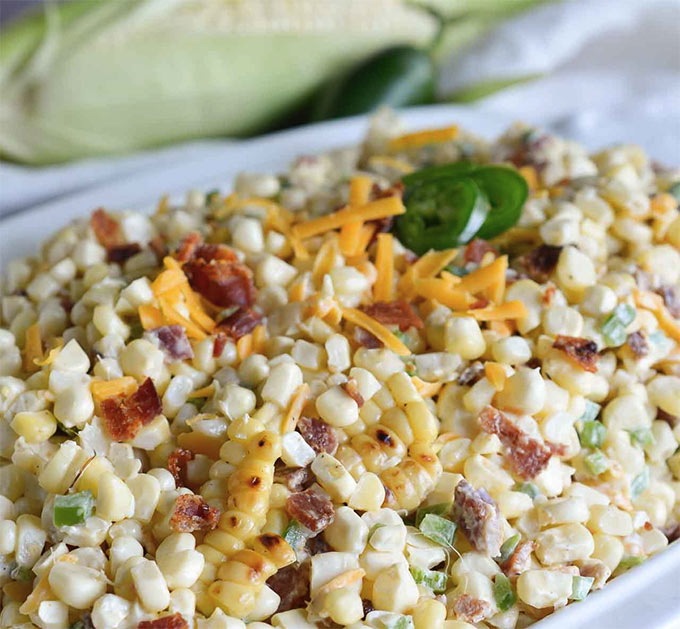
Jalapeno popper grilled corn salad - recipe by Wonky Wonderful
Jalapenos are in season just after corn, a bit later in the summer. Make this as soon as both corn and jalapenos show up in the markets.

Leave a Reply